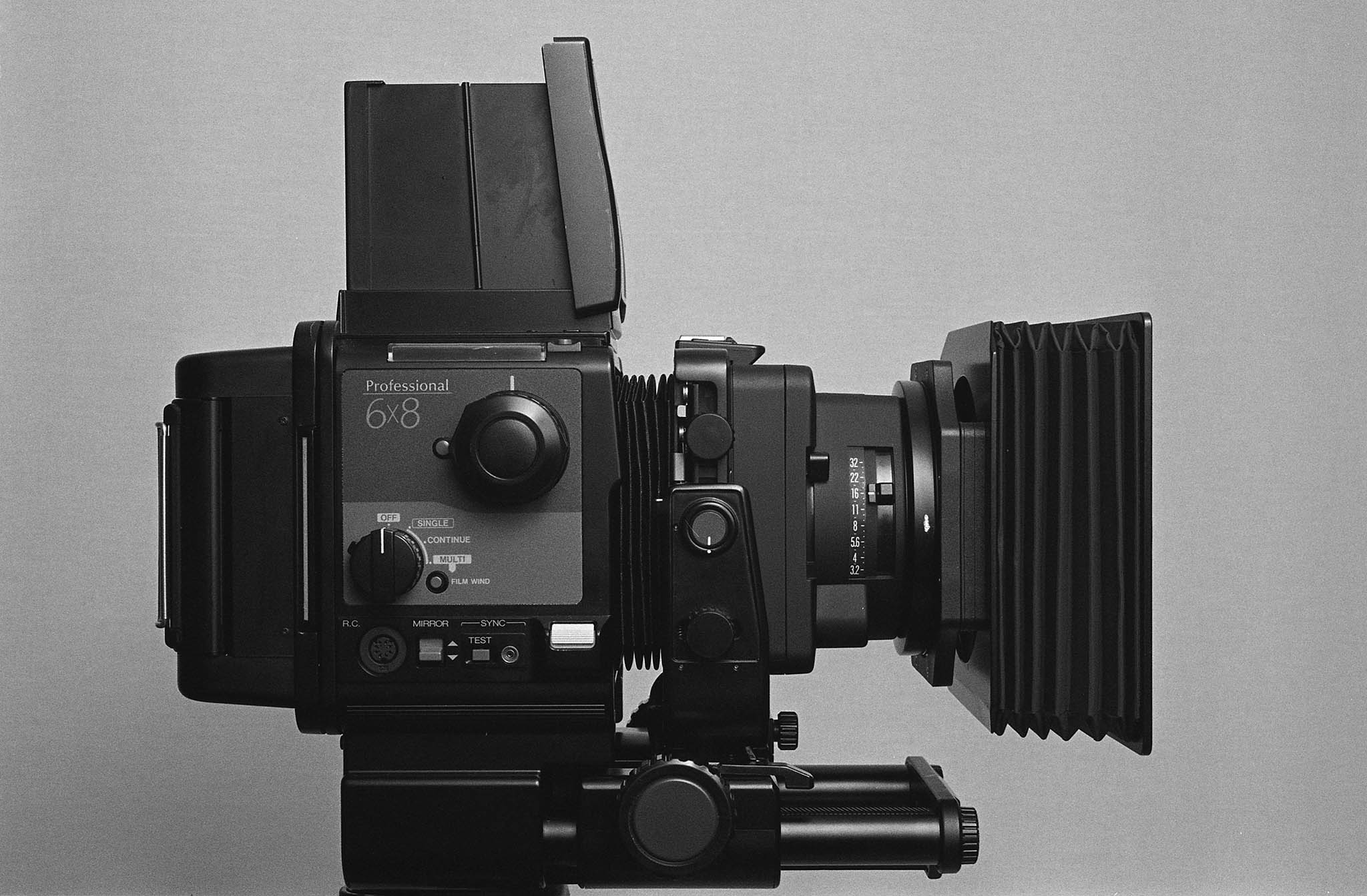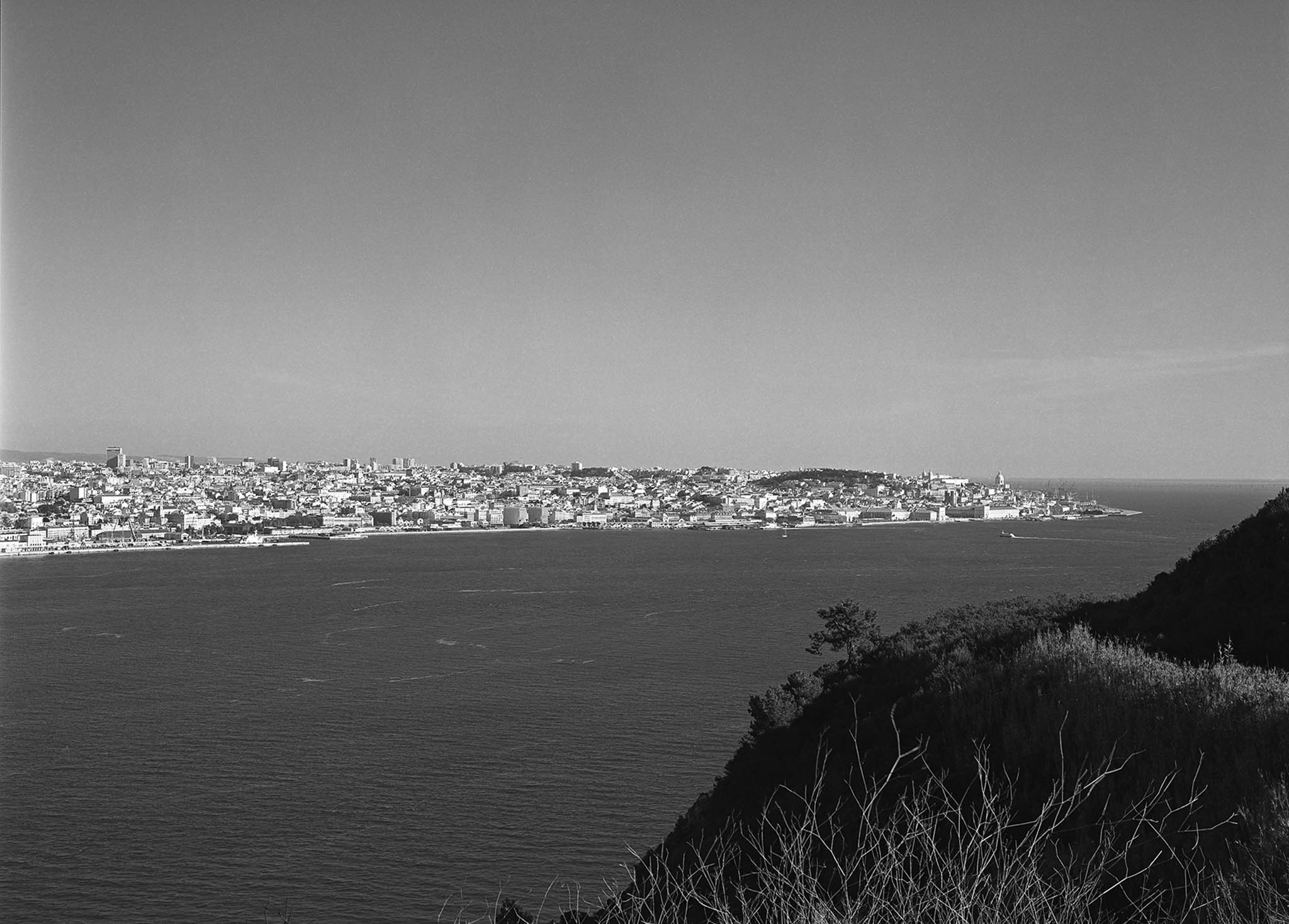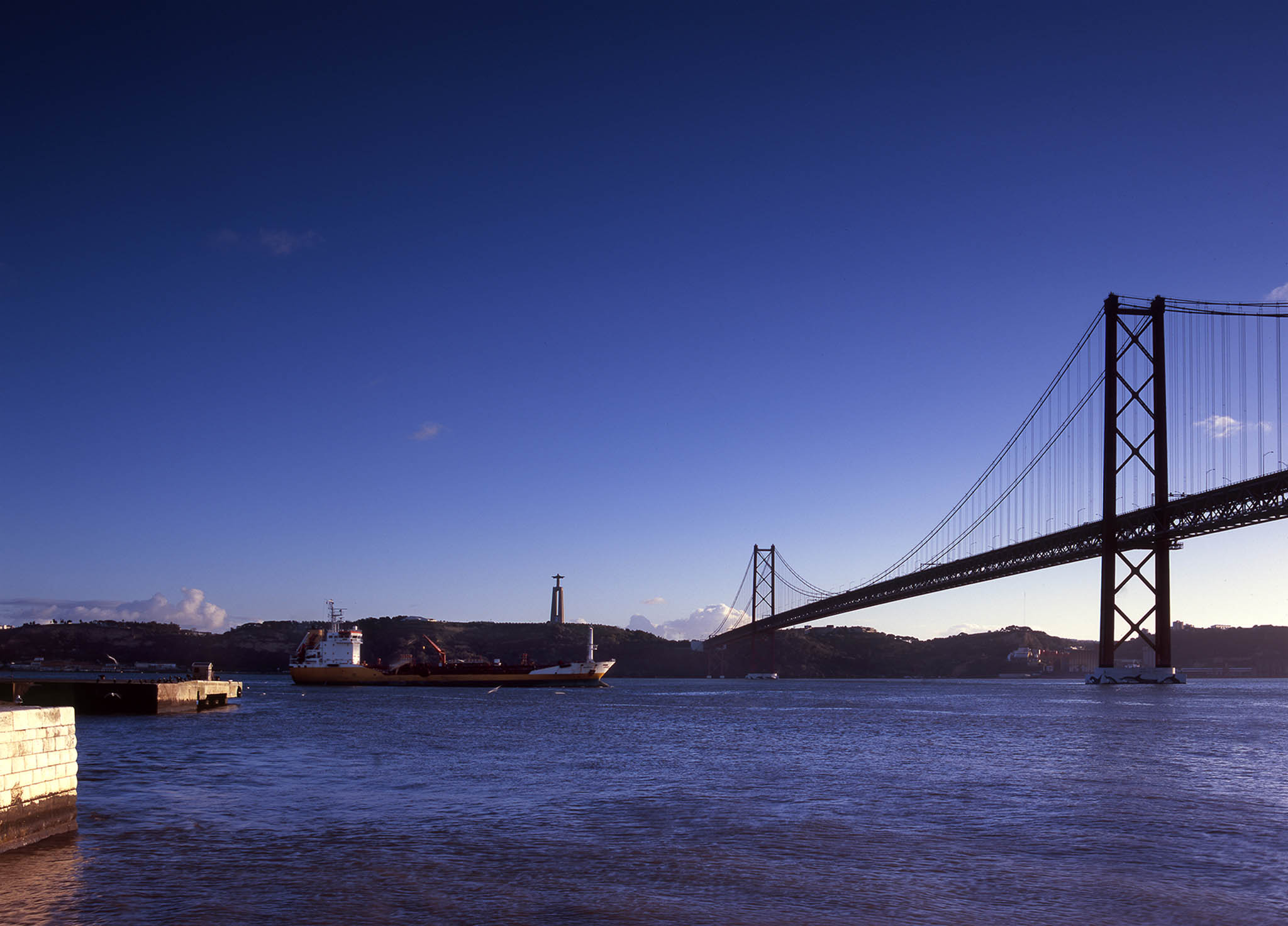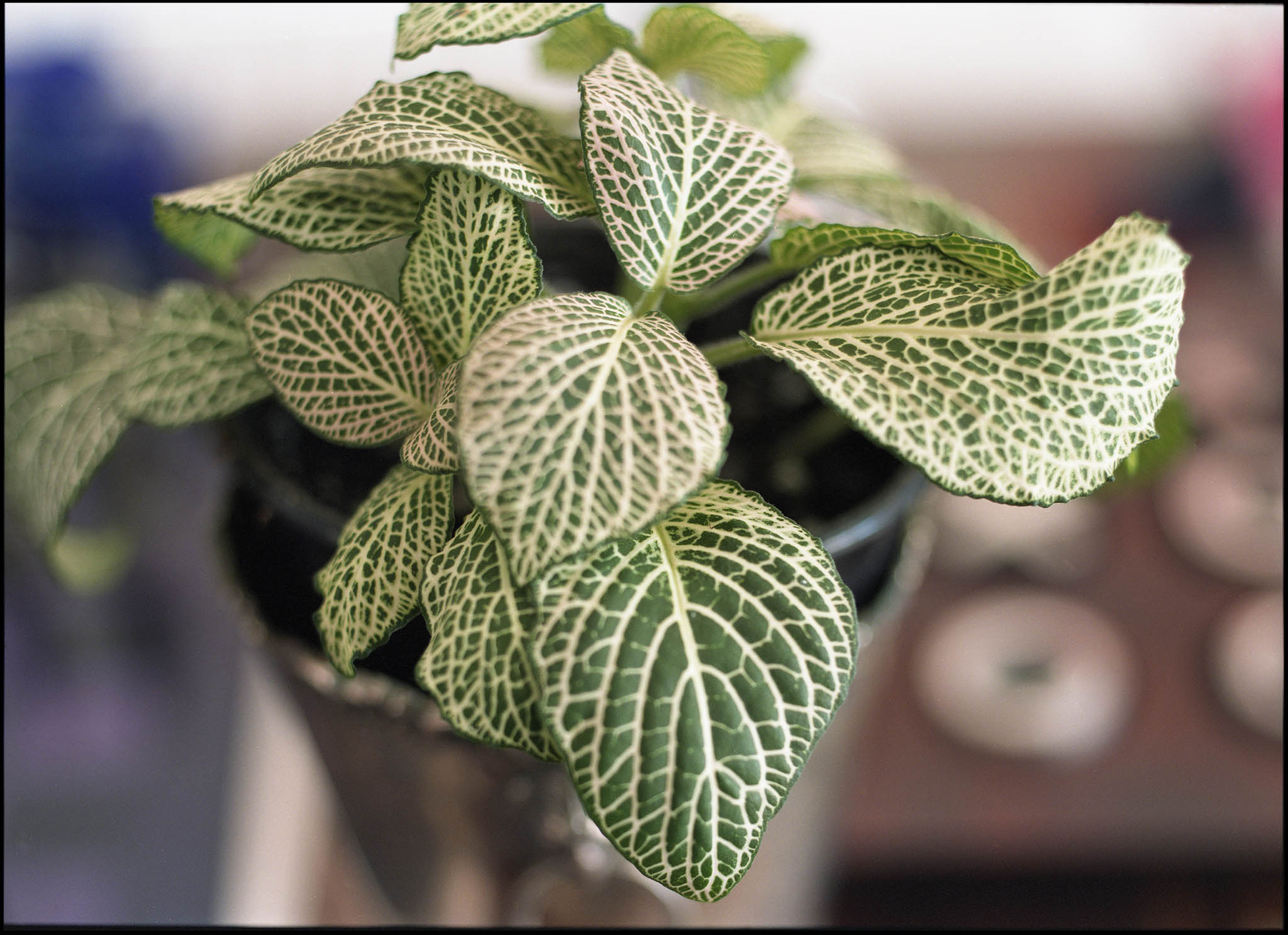I have many machines to make photographs, old or very old, all made many years ago, when emulsions were kings, that use rolls or sheets to register the image I see, the best I can.
If you use digital sensors, those are all the same, all the work is done after shooting in post production. Using film, because we are talking about film cameras here, in case you didn't notice, every camera and emulsion is a tool you have to choose from when doing photographic work. Many emulsions, many formats, many lens, and I love it, picking up the right tool for the right job. One day a 35mm camera is just right for speed and street, for example, the other day a view camera is in order to just contemplate and take time to meditate on composition and light over the subject, or a colour roll, b&w maybe...
Sometimes it's just hard to choose among them all. In this camera harem of mine, I have my favourites, the ones upon whom the passion is even stronger. One of them is the Fuji GX 680. I have the model II, built in Japan from 1995 to 1998. And it is just something out of this world. It weighs around 4kg, accessories out, and is made for studio work, but that I carry it around hanging from the neck feeling it like a feather of joy and pride. A true love story.
You get the best of both worlds, supreme image quality and all the capabilities of a professional camera. So monumental as modern and ambitious, this machine excels at portrait work and still life, along with landscape and architecture, or whatever we may think of. Upon starting to use it, it's very difficult to let her stand on the shelf for long. If you want the performances of a view camera with its image quality mixed with the medium format advantage, you are in to stay. No other camera offers this. It's not the universal medium format, but it is home to three innovations: a new format called 6x8, those front standard movements and motorisation with electronics controlling all its functions.
At the start there was the Mamiya RB 67 with a set of revolutionary ideas: a reflex with ground glass on top with hood, a revolving back for landscape or portrait and a lens board in front of a bellows for focusing. A success formula. Fuji started from this but adding what was most requested for the Mamiya, and later Rolleiflex, Bronica, and so on: depth of field. Next, Fuji picked up on the Graflex concept, this small large format camera offered front tilt raising focusing distance front and back, that is, changing the lens plane against film plane. The needs were set. The drawing of the new camera could begin. One major problem had to be solved right away: how to couple the information on camera body to the lens assemblage, as moving parts as they were. This has to be an electronic camera, with circuits and boards that must communicate with each other using new technologies at the time, today common everywhere, and they solved it with flexible multi wired strip. One last step had to be devised on how to arm the central shutter. The solution came upon using linear electric motors inducing with full precision the opening and closing of the blades. Again very new at the time today completely obsolete. But it's still working like a charm as we all using the camera today can confirm. For the revolving back, Fuji was smart enough, against less reliable solutions like the Mamiyas, to mount a motor on the back itself with electric contacts, avoiding like that the need of mechanic coupling with camera body. And of course, enough power must be available to feed motors on body and lens, along with the back, and all that juice comes from 6 AA standard batteries in a box on the left of the body. In total there are 35 gold electric contacts to move all over the working information, making the camera a joy to handle and use!
The operation starts on the back, this one containing all perfections, old and new. There is the thin metal dark slide with a convenient pocket to store it while photographing. There is a window to hold the reminder of the film inside the camera, along with a white surface to record notes in pencil. A lever on the left lifted up allows the door to be open to access the roll chamber and holder. Inserting film and pushing it in place is a very straightforward job, no need to worry about precise arrow placements, just don't go past it. Diode sensors detect film surface and start counting in the exact moment. Film speed is set on top of the back by a rotating knob. Frame counter is next to it. Now some important information: there is a lithium battery inside the back to power up the frame number memory when it is not attached to the machine body. This battery lasts for long but not forever. If it gets exhausted, and the back is separated from the body in middle film use for any reason, frames counter that far are lost forever. So ensure yourself before buy about the condition on this battery. Changing it is not difficult or expensive. When I got mine I was assured the battery was just replaced and so far, after many rolls I still had not any problem.
Attaching the back to the body is easy with the visual aids all around the coupling. Mounting the lens is also a breeze, just make sure all the clicks and shapes rest in place. For flash photography there is a hot-shoe on the lens mounting and a sync socket on the body, both being X-contacts. As the shutter is the inter-lens type, flash light will synchronise at any speed. There is also a spirit level, very useful in many situations.
We are ready to go. As I usually take it out with the strap as accessory, that makes it even a more heavy tool to carry around, almost 5 kg, with the standard back and lens. To get the action started in standard mode, move the main power knob on side right into Single position. The other being Continuous (with film advancing one frame per second as long as shutter release is depressed) and Multi for multiple exposures into the same frame. The green light on top right of the body, Batt/Ok, needs to be steady green for everything to be ready to shoot. Most of the time this light is flashing is because the dark slide is not into the resting place for shooting. Other alert signs can be the back not exactly into position, jammed film, or some gold contact not flowing in. All going as it should, upon power up into Single, the film advances smoothly into 1 Exp, that movement graphically showing on top by cute round led meaning the film is advancing into place. Steady green as said? There we go.
Being a professional camera, all exposure calculations must be made outside the camera then transferred to it. Outside I usually follow the Sunny 16 rule, and inside a light-meter does the job. Still there is a sensor inside under the mirror that after exposure, warns the photographer about the final outcome. A green led marked EXP lights up if everything went like it should, or some red ones for under or over exposure. This TTL device is not a light-meter but only a security warning, so you may decide shoot it again with different parameters if some reds show up. I find it useful more to see if something went wrong with the mechanics or electronics.
The actual using of the camera is a complete joy. You feel it under your hands, solid rock, reliable, fully motorised, just keep shooting. We cannot stop enjoying the film advancing, the shutter arming, rewinding at the end. There is also a mirror up/down switch for quiet operation or steady operation.
On the accessories side, I have the remote cable control, the strap on to carry it outside and around, the angle view finder, although I really prefer looking though the hood down, that is my way to compose a photograph. I also got the regular AA batteries adapter, no need for the original one block battery. To take full advantage of this camera, a tripod, a strong one, is a must. Sometimes I take it out on monopod for faster shooting and steadiness.
Where this camera excels is the front standard movements, like a view camera. It has all three movements, swing, tilt and shift, very easy to set and block in place from some intuitive knobs and levers. I use mostly front forward tilt to have everything in focus on the ground in front of the camera without need to close the lenses for depth of field. Most of the possibilities of a view camera can be found the GX680, except of course, rear standard movements, but for general use they are perfectly enough. Portraits come out full blown, b&w or colour, Still life can be made taking advantage of front standard moves without the slow operation of a real view camera. Linhof and Horseman cameras, with the same kind of movements, are much more hard to use, and sheets are more expensive.
Now the lens. They are always what makes a camera in the end. The EBCs Fujinon GX are built like large format lens, great coverage allowing for movements, with superb contrast, sharp as a razor, ranging from 50mm to 500mm. I use it mostly with the 65mm f/5.6 for landscape and the 115mm f/3.2 for portrait work. When I got it there was also the 125mm, that sits home as a backup only. Anyway the normal lens for this camera is the 135mm, that was with the kit when buying it new in the past. Another great accessory that I have is the lens board adaptor, allowing regular large format lens, specially the Fujinon, but others as well, to be mounted on the GX680 using an easy to find Linhof board, and that is so neat. It's always on with my Schneider-Kreuznach Apo-Symmar 5.6/180, extending the range of focal lengths, and it's a awesome combo for portrait. In this case shooting is done with mirror up. The last accessory I have and recommend is the Wide-angle Bellows for more freedom of movements, especially with the 65mm. Now if you are into macro, Fuji have not forgot it in the GX680. Like in a view camera, bellows extension is only the limit for macro photography, and in the GX there a extension rails available everywhere for close up focusing, and with comes the Long Bellows, a winner set.
As I use to say, even knowing nothing about photography, out with a GX680 by the side you will look a photographer. To me, just picking it up is already an inspiration to do something, like having this big heavy eye working for me!
Here is the list of accessories available:
- AE viewfinder FL (view from above), AE angled viewfinder (view from behind) - each equipped with Exposure Meter (including flash), and a simple (no exposure meter) angle finder.
- Neck-strap (model III default accessory) & Neck-strap-set
- Extension Rail Set 40mm, since model II also 80mm - to extend the 65mm Focus-Rail
- 1m and 5m Remote Release
- Instant film-holder
- 120/220 roll-film-holder
- Focusing Screens (especially for different formats on model III)
- Bellows for long focus-movement or wide angle-lenses
- Film-Holder Adaptors for Hasselblad 6x6, Contax 645 and Mamiya 645 backs
- Bellows-Lens-Shades, Lens-Hoods
- Dioptric Correction Lenses for folding waist-level viewfinder
- Carrying Case
- Rechargeable Battery, Charger, Battery Holder
Pros:
- the three main front standards movements
- fully motorised
- set of lens perfectly adapted
- lens board adapter for large format lens
- waist level finder that is a joy to use, large and luminous
- monitorization of all functions in the camera, with warnings
- interchangeable bellows
- fast and easy of use
- standard filter sizes, 82 and 95mm
Cons:
- weight
- not easy to take outside from the neck or shoulder
- batteries run out fast
Hope this makes you want to try this camera made from heaven, and any doubt or question just ask!











